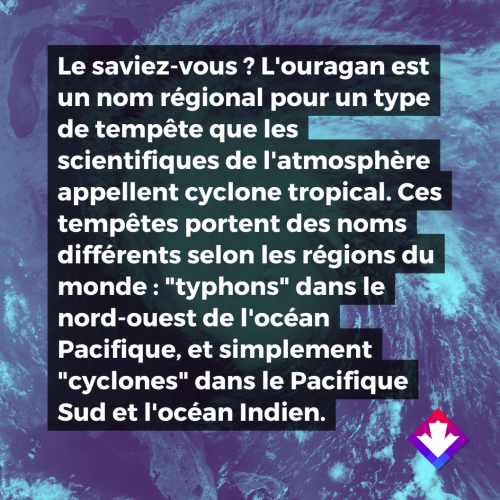[1] Des études indiquent qu’une température de l’eau d’au moins 26,5 degrés Celsius sur une profondeur de 50 mètres est nécessaire pour alimenter un ouragan (https://oceanservice.noaa.gov) (disponible en anglais seulement)
[2] https://oceanservice.noaa.gov/facts/how-hurricanes-form.html (disponible en anglais seulement)
[3] Mendez-Tejeda R, Hernandez-Ayala JJ (2023) Links between climate change and hurricanes in the North Atlantic. PLOS Clim 2(4). https://doi.org/10.1371/journal.pclm.0000186 (disponible en anglais seulement)
[4] Patricola, C. M., Hansen, G. E., & Sena, A. C. T. (2024). The influence of climate variability and future climate change on Atlantic hurricane season length. Geophysical Research Letters, 51. (disponible en anglais seulement)
[5]Seneviratne, S.I., X. Zhang, M. Adnan, W. Badi, C. Dereczynski, A. Di Luca, S. Ghosh, I. Iskandar, J. Kossin, S. Lewis, F. Otto, I. Pinto, M. Satoh, S.M. Vicente-Serrano, M. Wehner, and B. Zhou, 2021: Weather and Climate Extreme Events in a Changing Climate. In Climate Change 2021: The Physical Science Basis. Contribution of Working Group I to the Sixth Assessment Report of the Intergovernmental Panel on Climate Change [Masson-Delmotte, V., P. Zhai, A. Pirani, S.L. Connors, C. Pean, S. Berger, N. Caud, Y. Chen, L. Goldfarb, M.I. Gomis, M. Huang, K. Leitzell, E. Lonnoy, J.B.R. Matthews, T.K. Maycock, T. Waterfield, O. Yelekci, R. Yu, and B. Zhou (eds.)]. Cambridge University Press, Cambridge, UK and New York, NY, USA, pp. 1513–1766, doi: 10.1017/9781009157896.013. (disponible en anglais seulement)
[6] Il est important de noter que si la proportion d’ouragans majeurs augmente, le nombre total de tempêtes pourrait ne pas changer, même diminuer à certains endroits. Cela signifie que nous ne verrons peut-être pas plus d’ouragans de catégorie 3-5 au total, mais qu’un pourcentage plus élevé des tempêtes qui se forment pourraient être plus fortes. Il est important de reconnaître les limites de notre compréhension actuelle de la formation des ouragans et de la manière dont les changements climatiques sont susceptibles d’influencer leur formation et leur intensification.
[7] Li, L., Li, Y., & Tang, Y. (2024). On the duration of tropical cyclone rapid intensification. Geophysical Research Letters, 51, e2024GL108578. https://doi.org/10.1029/2024GL108578 (disponible en anglais seulement)
[8] https://www.cbc.ca/news/canada/nova-scotia/looking-back-at-hurricane-juan-20-years-after-deadly-storm-hit-nova-scotia-1.6981082 (disponible en anglais seulement)
[9] https://www.cbc.ca/news/canada/nova-scotia/weather-snoddon-fiona-recap-1.6976249 (disponible en anglais seulement)
[10] https://www.ctvnews.ca/climate-and-environment/data-shows-fiona-s-impact-across-atlantic-canada-as-all-time-records-broken-1.6084819 (disponible en anglais seulement)
[11] https://www.cbc.ca/news/canada/nova-scotia/weather-snoddon-fiona-recap-1.6976249 (disponible en anglais seulement)
[12] National Hurricane Center Tropical Cyclone Report: Hurricane Fiona 14-23 september 2022 (pdf) (disponible en anglais seulement)
[13] https://www.ibc.ca/news-insights/news/hurricane-fiona-causes-660-million-in-insured-damage
[14] https://www.canada.ca/en/environment-climate-change/news/2024/05/environment-and-climate-change-canadas-canadian-hurricane-centre-expects-a-very-active-hurricane-season.html
[15] https://www.noaa.gov/news-release/noaa-predicts-above-normal-2024-atlantic-hurricane-season (disponible en anglais seulement)









